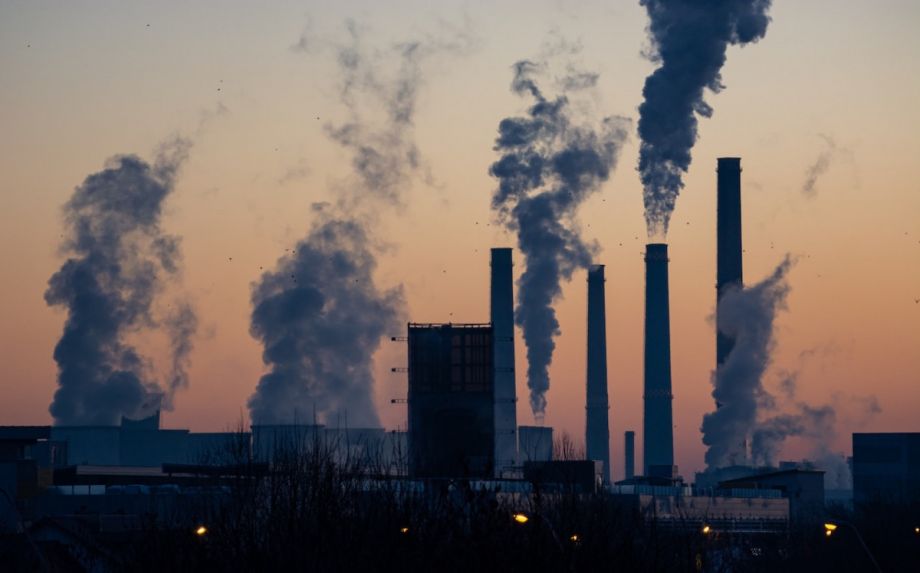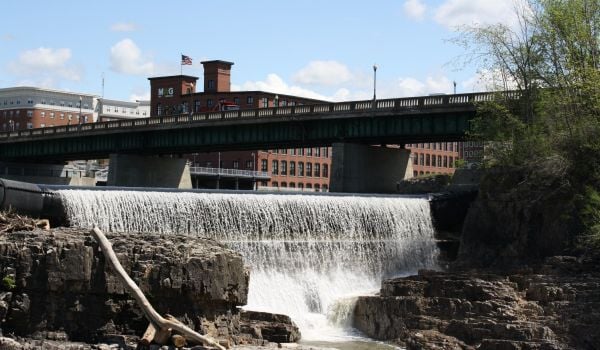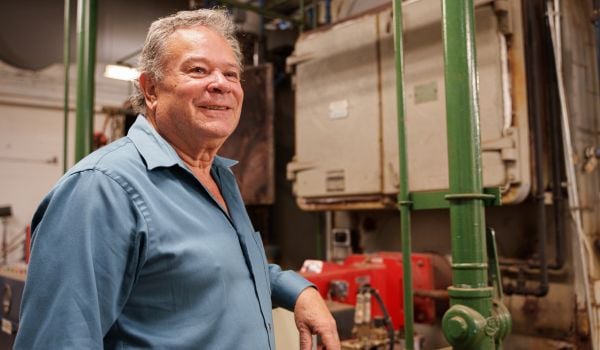As the country roasted last week under extreme heat made more intense by climate change, tens of thousands of Americans received text messages telling them they could get paid if they powered down their devices and appliances during specific periods of the day. If their homes were equipped with smart thermostats or smart water heaters, the devices may have powered down automatically.
It may have seemed like a simple action to conserve energy during hours of peak demand. But behind the scenes, a number of companies that have emerged in recent years were working with utilities to monitor and respond to the stress on the grid as people blasted air conditioners to stave off the blistering heat.
All of this was enabled through a virtual power plant, a portfolio of distributed energy resources that can be managed with software to scale to meet the power demands of hundreds or thousands of homes or businesses. The resources can include smart thermostats, rooftop solar or even EV charging stations.
While many consumers may not have heard of them before, virtual power plants are an increasingly important technology for cities to manage spikes in demand during extreme weather. And, according to energy policy experts, these platforms are also an important climate solution to reduce greenhouse gas emissions and bring more renewable energy onto the grid.
With more extreme heat expected to bring additional stress on the grid in years ahead, that’s a big deal for policymakers who also know that the country needs to move away from a reliance on fossil fuels.
“Virtual power plants are a critical and low-cost solution to enable a decarbonized energy future,” says Kevin Brehm, a specialist in carbon-free electricity at the nonprofit Rocky Mountain Institute, which advocates for improving energy policy.
Utilities rely on highly polluting fossil fuel-burning peaker power plants, which are fired up when demand surges. Brehm argued in a paper he co-authored for RMI that virtual power plants can directly reduce emissions by shifting demand away from the plants, which can emit carbon dioxide, nitrogen oxides and sulfur dioxide that can trigger respiratory problems among nearby residents, especially children.
“Why that really works for the climate and public health is that power plant supply gets dirtier as you get into the more difficult weather,” says Mike Jacobs, a senior energy analyst with the Union of Concerned Scientists. “Peaker power plants are the dirtiest.”
Little reliable data exists on the scale or total impact of VPPs. Wood Mackenzie, a global energy research firm, has identified 563 virtual power plants either operating or in development in the U.S. in 2023, with California having the highest concentration of them in the country, according to a spokesperson. Virtual power plants can be found in residential, commercial and industrial sectors.
The potential for virtual power plants is growing, and their impact on the environment could be significant in years ahead. Brehm and his colleagues have found that VPPs could reduce peak energy demand in the U.S. by 60 gigawatts (GW) — about the same amount of energy used each year by 24 million households — and reduce annual power sector expenditures by $17 billion by 2030. A separate analysis, commissioned by Google, found that VPPs could save U.S. utilities $15 billion to $35 billion over the next decade.
One of the country’s major planned virtual power plants would be based in New York’s Hudson Valley, where the nonprofit organization Sustainable Westchester is set to roll out a smart battery lease program for homeowners later this year that would be aggregated and harnessed to manage energy demand. The program could potentially reach 45 cities and towns, or one million people.
“The beauty of the virtual power plant is that it will allow every resident to participate in a two-way conversation — from home to grid and grid to home — to reduce fossil-fuel reliance,” says Leo Wiegman, the nonprofit’s director of solar. He says that once homes are outfitted with home battery storage they can store excess energy and “ship that back to the grid.”
In one study, researchers at the Vermont Law School’s Institute for Energy and the Environment found that virtual power plant projects in California, Vermont and Australia had reduced carbon emissions and had the potential to make grids more resilient. “VPPs have proven they can be a clean, flexible, and resilient resource that can support the clean energy transition,” the authors wrote.
Virtual power plants can also help contribute to the expansion of renewable energy on the grid by helping to manage demand when wind or solar power fluctuates; they can support electrification, too, by helping to manage load as EVs, heat pumps and other infrastructure come online, which could lead to a major increase in electricity demand.
In recent years, companies across the country have begun offering residents financial incentive programs that run off virtual power plants during the summers when grids are most stressed.
These programs typically work by nudging customers on their cell phones about high energy demand periods to turn off their appliances to save energy, or by using smart technology to automatically deactivate electronic devices. In New York, Sustainable Westchester said its rewards program had reduced energy usage by 7 megawatts in the summer of 2022, enough electricity to power 25,000 homes.
Energy experts have been examining whether virtual power plants can lead utilities to retire peaker plants or avoid building new infrastructure that relies on fossil fuels. In Vermont, the utility Green Mountain Power says it was able to decommission two diesel generators responsible for 4 megawatts — enough power for nearly 1,000 homes a year — of peaker energy in part owing to a virtual power plant that relies on home battery systems.
But for virtual power plants to be widely adopted to decarbonize the grid, utility companies need to be committed partners and policies and regulations need to change. Brehm says public utility commissions may need to change how they regulate energy companies, for example, and may need to develop new incentives to expand virtual power plant usage.
Jacobs said that some utilities may simply be afraid to embrace technological innovation because of the potential risk to their bottom line. “Information technology is now readily available, and the utility system has really fallen behind,” he says.
The gold standard for virtual power plants to be considered climate solutions would be if they were combined with renewable resources. In Herriman, Utah, the community of Soleil Lofts is one of the best examples in the country of that model.
Besides attractive apartments and a full slate of amenities, the 600-unit complex is fully powered by the sun. Each unit is also outfitted with a smart battery that stores energy and acts as a backup generator during power outages. A virtual power plant helps to manage energy demands and even feeds power back to the city’s grid when needed. And, of course, it powers the complex’s EV chargers, heated indoor spas, pools and other facilities.
Maren MacKay, who works in Utah’s solar industry, was looking for a new place to live in suburban Salt Lake City last fall when she discovered Soleil Lofts. She said living there has helped her to save money on her utility bills and has given her comfort during winter storm blackouts because the battery in her unit acts like a backup power source. Equally important, it allows her to play a role in combating climate change.
“I’m lowering my carbon footprint,” says MacKay, 29. “That’s awesome.”

Cristian Salazar spent over a decade as a daily journalist. He worked as a crime reporter in Paterson, N.J., and as a newsman for The Associated Press in New York City. His stories have appeared in The Washington Post, The Daily Beast and several other publications. He was born in Mexico and raised in Colorado.
















